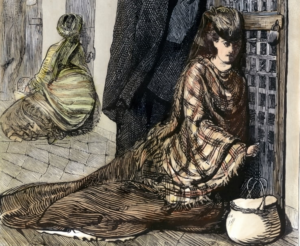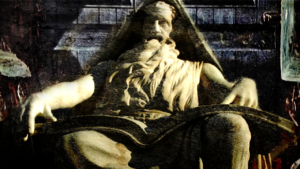Fellini: La Fine di Roma
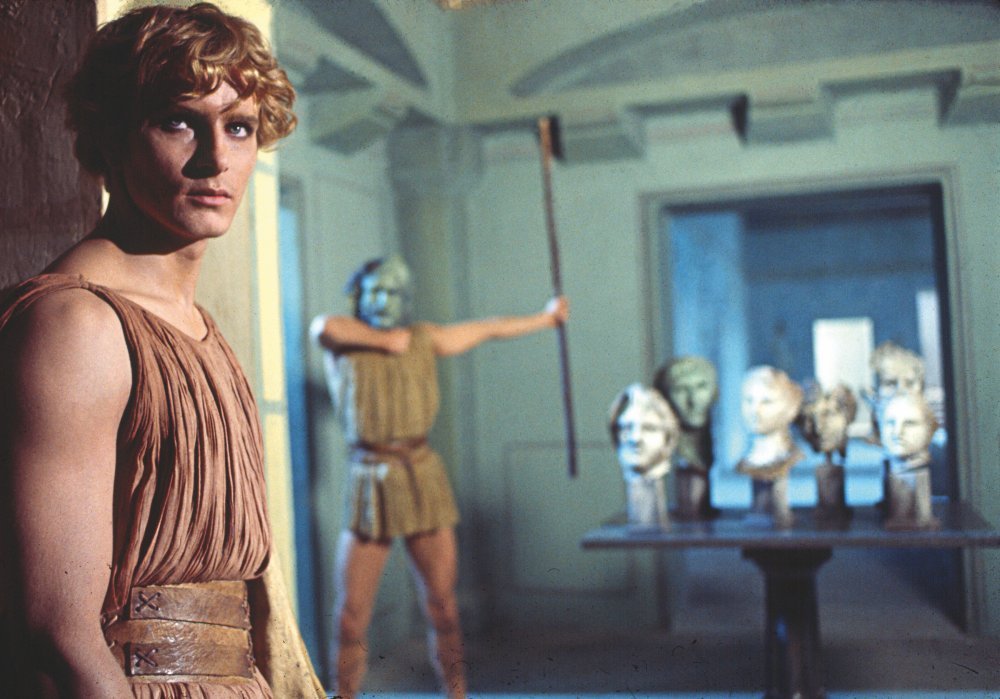
Fellini’s odyssey through a decadent, surrealist vision of Rome is one of the director’s greatest achievements. A film that accurately depicts an empire well into its decline, Satyricon serves as Fellini’s ultimate statement on civilizational collapse – a theme that followed him throughout his career. The film is episodic in structure with the largest narrative thread being the homoerotic love triangle between Encolpius, Ascyltus, and Giton. Encolpius, after failing to win the heart of the young Giton, embarks on a journey throughout this surrealistic vision of Rome – encountering many strange figures and even stranger events along the way.
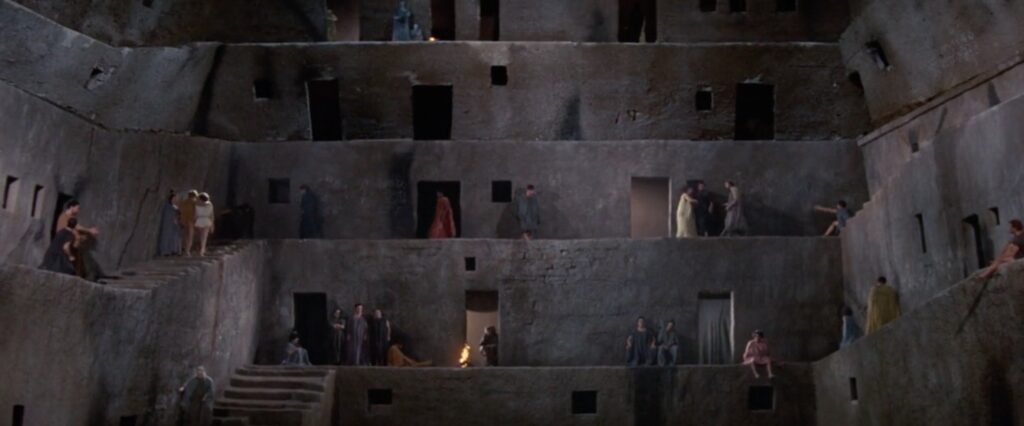
All of these vignettes Encolpius either takes part in or is witness to are seemingly random and nonsensical. The entire film has a dreamlike quality to it, but this is all by design. Each vignette shows a different part of Rome, but all are equally strange and grotesque.
The underworld: Encolpius lives in what is essentially a Roman favela. In this setting we witness the decay firsthand – every person we see is remarkably disgusting save for Encolpius, Giton, and Ascyltus. Immediately we see the dynamic of the society at work when Encolpius saves Giton from the actor. Beautiful youth against spiritual vampires. The underworld is inhabited by monstrous people. Old hags, decrepit men, obese women, cheap prostitutes, and other disgusting, seedy characters. All of them are maniacally played by the extras, making them more demon-like than human. New money: Encolpius meets the wealthy freeman Trimalchio at his villa. Trimalchio is a spiritually low creature who demonstrates the worst qualities of the high society. He’s one of many caricatures of decadence Encolpius meets in the film.
“I was a cockroach. Now I’m a king. That’s life.”
Trimalchio is the epitome of “new money” – a former slave who now lives lavishly. He’s tasteless and vulgar. He is an “elite” of the gerontocracy. The party he’s holding at his villa is essentially a celebration of himself and a reflection on the system that allowed him to rise to his current status. Again we see the dynamic of youth versus gerontocracy highlighted by Trimalchio’s pederasty. Youth, specifically male youth, is valued only as a sexual commodity as Encolpius is little more than a rent boy for the elites. This is shown to greater effect in the subsequent vignette with the pirate slave trader, Lichas. Lichas imprisons Encolpius, Ascyltus, and Giton to be sold as sex slaves for the mysterious young emperor. Lichas becomes smitten with Encolpius and eventually takes him as his bride in a ceremony held by Lichas’s wife. The young emperor (played by a woman, furthering the theme of sexual confusion) takes his own life – and in his place a new Caesar rises. The already bleak political situation worsens.
Death of nobility: later in the film, we encounter the villa of a true Roman aristocrat. Notably, his villa has a much more grounded design – there’s a stark absence of any surrealism or grotesqueries in this scene. There’s no music either. We see him set all his slaves free before going into his garden with his wife where they both commit suicide. This sequence is one of the only ones in the film to not feature Encolpius. The aristocrat is handsome and his wife is beautiful – a deliberate rarity in this film. This scene is probably the most crucial one in the film, as Fellini chronicles the despondency of true elites as they are consumed by existential nihilism. A parallel can be drawn between these characters and Steiner in La Dolce Vita – Steiner faced a similar crisis in the face of decay and took his own life as well as the lives of his children.
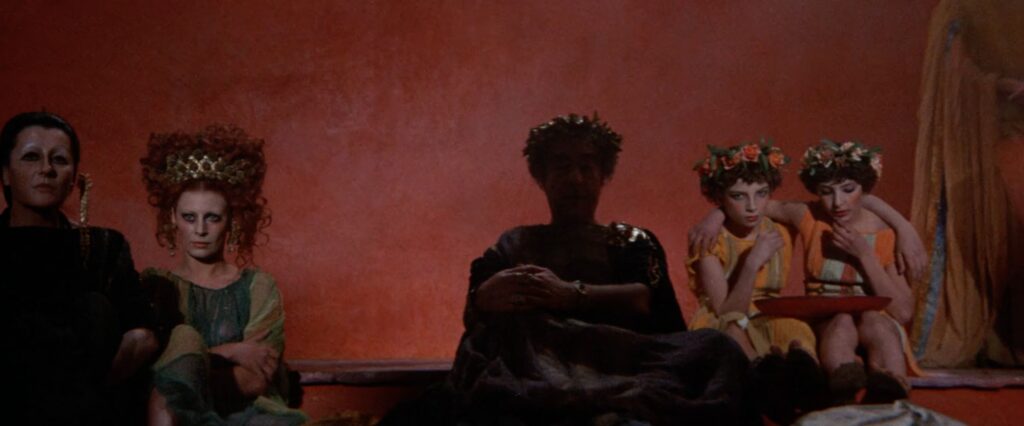
Earth-Mammy and Sexual Humiliation: throughout the story, Encolpius is sexually humiliated several times. Whether it be in the form of a marriage to Lichas, or his inability to have sex with the old woman at the end of the labyrinth (which was met with laughter and jeers from the grotesque audience at a festival dedicated to Momus). He is told that there is a place where prostitutes can cure his impotency by being repeatedly whipped by them. But that also doesn’t work, and only further humiliates him. Encolpius eventually makes his way to a sorceress who is said to cure all impotency – Oenothea. Oenothea is a fat brown woman resembling the Venus of Willendorf who uses the facade of a thin, attractive east African woman. Encolpius must drink a potion to find her and make love to her to cure his impotency. Under her spell, his impotency is cured. Though it’s clear that it was yet another form of humiliation, as he is left feeling mocked and shamed by this sorceress. I don’t believe Encolpius was ever impotent. Encolpius is not initiated into the society’s accepted sexual dynamic which is centered around decaying, gross women. At the Momus festival, they laughed at him for not being able to have sex with an old whore. As a beautiful youth, Encolpius shows attraction to other youth of similar beauty throughout the film whether they be men or women. He is constantly undercut by the society around him – conscripted to worship the earth-mother as his final, greatest humiliation.
The Labyrinth: the Momus festival I mentioned earlier was Fellini’s own creation. Here we see the self-hatred and mockery of this Roman society. The Greco-Roman myth is turned into complete farce for the sake of cheap amusement. The audience cackles at the subversion. The minotaur taking off his mask and laughing at Encolpius neatly ties this idea together. There’s a cannibalistic quality to this society, doing everything short of actually eating their own. Nothing is sacred and everything is at the service of low existence. The sets themselves reflect this – highly stylized while looking somehow cheap.
This is a society living under the facade of Rome, and as such, everything has become part of the artifice. Everything has been reduced to kitsch. Fellini’s subsequent film about Rome was released in 1972, in ROMA we see a continuation of the ideas he introduced in SATYRICON, presented as a collection of vignettes all of which are loosely connected to one another. It is Rome as seen through the eyes of Fellini throughout different points of his life, and like SATYRICON, there is a fantastic and surreal quality to these vignettes. This dreamland version of Rome is Fellini’s Rome, and further contextualizes the imagery in SATYRICON by bringing that vision into a modern context.










